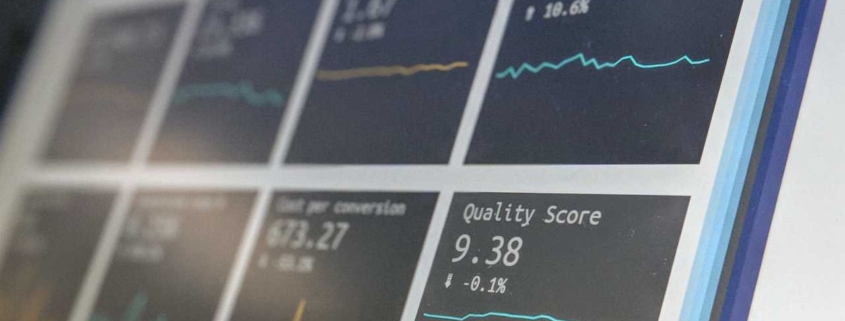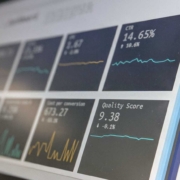Calculate logistics performance indicators.
When determining logistics performance indicators, the definition and associated calculation quickly becomes a stumbling block. In this article I discuss the most important with clear calculation examples.
Delivery performance.
The main factors in this indicator are the date requested by the customer and the date promised / planned by the organization. These two factors are sometimes interchanged.
Customers request a delivery date on which or in any case no later than that date, the goods must be delivered. The “Customer request Date”. In response, organizations issue a date to the customer when they think they can deliver the goods. Scheduled or Committed Date. This date is often different because, for example because of the production backlog, you give a later date, or else you make a partial delivery.
Example:
1000 customer orders
890 orders delivered on the date requested by the customer [customer requested date] 110 late
45 of these 890 orders were delivered as partial deliveries
920 orders delivered according to Scheduled date. 80 too late. of these, 50 were delivered as partial deliveries.
Delivery performance according to Customer Requested date: [890-45] / 1000 = 84.5%
Delivery performance according to Scheduled Date: [920-50] / 1000 = 87%
You can see that your customer’s perception of your performance will be significantly different from that of your own employees.
Fill Rate.
Een Fill rate laat zien hoe snel uw organisatie kan reageren op klantenorders vanuit een make to stock situatie. De indicator representeert het percentage orders dat binnen 24 uur kan worden verscheept naar uw klant. De calculaties willen nog wel eens verschillen, maar het gaat om de service levels tussen 2 partijen.
Example:
your customer orders 30 products, 10 of which are from your stock. Your organization will send 7 products within 24 hours and the remaining three products 2 days lower.
Fill rate: [7/10] * 100 = 70%
It is always about the direct shipment, within 24 hours, and deliveries from your stock.
Order Fulfillment lead time.
This indicates the average time it takes to meet customer demand. It shows how quickly your organization can respond to customer orders from a make-to-order environment.
your leadtime runs from the receipt of your customer order, order release and planning, make period, shipping and final receipt by the customer. So end to end.
Example:
your customer ordered 10 products that had the following lead times:
[30.31,32,34,32,32,32,35,35] / 10 = 29.3 days
Perfect order fulfillment
This indicator is the most complete indicator for the logistics performance of your organization. It measures whether you deliver on time, complete, without damage and with complete documentation. The indicator is also strict in its measurement. If your customer places an order for 5 different products with a total of 4000 items, an error in invoicing is sufficient to book this entire order as imperfect.
Example:
Total number of orders received: 10,000
Total number of orders shipped: 10,000
Number of orders delivered complete: 9,950
Number of orders on time on the Customer Requested date: 9,500
Number of orders with incomplete or incorrect documentation: 1,000
Number of orders with any form of physical damage: 50Perfect order fulfillment: [9,500-1,000-50] / 10,000 = 84.5%
Supply chain response time
This includes the time it takes for an integrated supply chain to respond to a significant deviation in demand. It should therefore not be an incidental peak or trough. It exceeds capacity, lead time and available labor, including temporary contracts. Such a change can only be resolved by a structural change in policy.
Example:
The calculation can be divided into three parts.
1) Average time required between the identification of materials until the purchase process actually starts. this is usually determined by the MRP after changing the required material requirement.
2) The average time it takes to acquire the materials from the supplier. Also known as “Purchasing Cycle time”.
3) The average time it takes to procure goods [physically] from the supplier until these materials are available for production. This therefore includes the receipt, control and availability of production.Average time for indicator 1: 1 day
Average time for indicator 2: 3 days
Average time for indicator 3: 2 days
Value for total materials purchased: 20,000
Number of suppliers: 20
12 suppliers represent 95% of the 20,000
Longest supplier cycle time of these 12 suppliers: 2 months = 60 daysSupply chain response time: [1 + 3 + 2 + 60] = 66 days + Order Fulfillment leadtime [previous example] 29.3 days = 96 days total
Production flexibility
Production flexibility falls into one in 2 parts. Upside and downside.
Upside: The ability of your production organization to absorb a structural significant change in production. one that cannot be accommodated with extra overtime or temporary forces.
Example: [20% increase in production demand]
Current production utilization rate is 90%.
it will take 3 months to set up a new production facility and buy the necessary equipment to at least increase capacity by 10%.
Hire of new staff will be 2 months.
95% of suppliers are able to increase their output by 20% for a period of 3 months. 2 suppliers cannot do this.
Sourcing alternative suppliers takes 2 months. The Cycle time suppliers is 2 months. So it takes 4 months to get to the required capacity
It will take 2 months to increase the transport capacity by the required 15%. [5% can be covered by occupancy improvement]The longest time to absorb the increase is with the Sourcing. This is the bottleneck that takes 4 months. Production is possible within 3 months and transport within 2 months.
The upside flexibility = 120 days
Downside flexibility is your organization’s ability to respond to a significant change in customer demand where your organization is not faced with additional penalties or inventory costs. If the orders are canceled too late, your organization has already incurred costs in the form of stock or WIP.
Example:
5% of all orders are in the finished goods stock, 30 days before delivery. None of these products can be used for other customers.
90% of all orders are produced 30 days before delivery. Of these 90%, 10% can be used for other customers. 5% of these orders are not yet in production, but still for the term of 30 days.
The raw material is already 70% purchased for all orders, 30 days before delivery.
Of these 70%, 25% can be used for other customers. [70 * 25 = 17.5%]
Of the 30% that have not yet been purchased, 40% can be canceled to the supplier, without further costs. [30 * 40 = 12%]Of the 90% orders produced, production has started so there is WIP. Of this WIP, 10% can be reused at no cost. So this is 10/90 = 9%
90% of all orders are produced and 5% final, so 5% have not yet started and no WIP.
Assuming that the distribution of the 70% of materials purchased applies to the 5% that does not have a WIP, then the following applies: 70% * 25% = 17.5% can therefore be used for other orders.
Of the 30% not bought, 40% can be canceled. 30 * 40 = 12%
So no costs will be incurred for 29.5% [17.5 + 12]. This represents: 29.5% * 5% = 1.5% of all orders.overall the down side flexibility is: 9% + 1.5% = 10.5%
If you have more questions about adjusting your logistics performance indicators or if you want to know what your performance is in relation to the market. You may contact me for further advise and support contact









